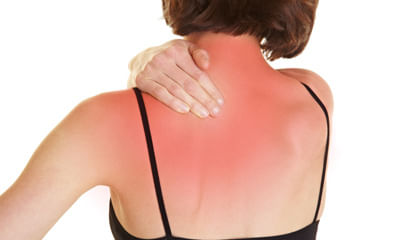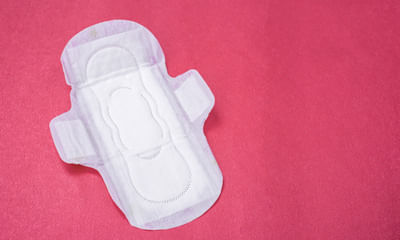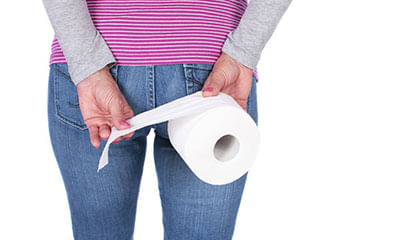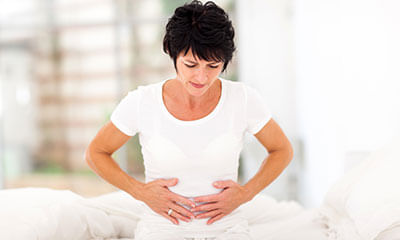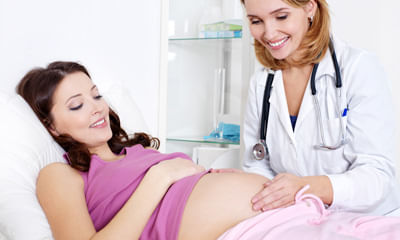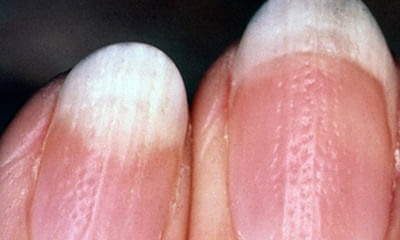Severe Constipation In Pregnancy
Varicose vein in left leg has been diagnosed since a year .it gives severe pain once in a month which lasts for an week ...
Ask Free Question
Condition that puts excessive pressure on the legs or abdomen can lead to varicose veins. The most common pressure inducers are pregnancy, obesity, and standing for long periods. Chronic constipation and in rare cases, tumors also can cause varicose veins. Let's have a detailed discussion to ensure proper treatment.
She having three year of severe period pain with leg nerves are pain .this very sever more. Day by day increases pain .n ...
Ask Free Question
One should get marry once fully developed and prepared, physically as well as mentally. As far as her report is concern, there is lot to discuss in detail about her medical condition. You should discuss it in detail over a call or a video call for a detailed and effective consultation.
Dear sir/mam .i'm suffering from piles problems from last 1 years symptoms are .severe paining in latrine place ,constip ...
Ask Free Question
Piles are collections of tissue and vein that become inflamed and swollen. Piles occur due to chronic constipation, chronic diarrhea, lifting heavy weights, pregnancy, or straining when passing a stool. Let's have a detailed discussion to ensure proper treatment.
I am 31 years old. Right now I am 9 weeks pregnant. My doctor suggests me macfolate, duphaston 10 mg and doxinate od tab ...
Ask Free Question
Constipation is normal in pregnancy. The syrup you are taking is absolutely safe. Don't worry. You can try taking plenty of vegetables, water and Ispagulla
Sir, I am 11 weeks pregnant and have severe constipation and since seven eight days bleeding got checked they told its i ...
Ask Free Question
Hi lybrate-user its unfortunate that you are going through so much pain! but do not panic. Pregnancy leads to piles and constipation. It's just natural. Try to visit a surgeon. Simple sitz bath can give you enough relief. Do not take unsupervised medications.
Hai I am 24 years old I have psoriasis from 14 years now I am 14 weeks pregnant, is there any risk for my pregnancy and ...
Ask Free Question
If it is severe and bleeding along with odor then probably you need a physician examination. In addition to a general physical examination and a digital rectal examination, you may need rectum and lower, or sigmoid, colon examination, blood test, or evaluation of anal sphincter muscle function. We need to discuss it further to know your prolonged constipation history.
I am 21 years I was diagnosed with pcod I have not had my period since may and it is now october my weight is rapidly in ...
Ask Free Question
Anti pregnancy pills may have some serious side effects that can affect your menstrual cycle in a negative way. If you are a regular consumer of anti pregnancy pills then it may cause some serous headache, nausea and some other problems. Especially if you a have bad medical history in your family I might become more severe. Unintentional weight gain occurs when you put on weight without increasing your consumption of food or liquid and without decreasing your activity. This occurs when you’re not trying to gain weight. It’s often due to fluid retention, abnormal growths, constipation, or pregnancy. Unintentional weight gain can be periodic, continuous, or rapid. Periodic unintentional weight gain includes regular fluctuations in weight. Changing food habit and regular workout may help you to lose your weight effectively.
I am 23 years female and facing the problem of piles it is starting should I consult a doctor or maybe I go for a ayurve ...
Ask Free Question
Most people use the term piles if they see any bold in motion, which may be just mild from minor injury in the excretion pathway resulting from constipation, or fistula or gastroenteritis and see in the blood is NOT piles, in all cases. Piles are hemorrhoids that become inflamed. Hemorrhoids are masses, clumps, cushions of tissue in the anal canal - they are full of blood vessels, support tissue, muscle, and elastic fibers. Piles can be of various sizes and may be internal (inside the anus) or external ones (outside the anus). Typically, internal piles occur from 2 to 4cm above the opening of the anus. External piles (perianal hematoma) occur on the outside edge of the anus. The internal ones are much more common. Symptomatic hemorrhoids affect at least half the population at some time in their lives before the age of 50. In the majority of cases, piles are effectively treated with over-the-counter medications, a good fluid intake, and by following a diet high in fiber. In severe cases, the piles may have to be surgically removed. About 10% of patients who go and see their doctor about piles eventually require surgical intervention. Internal hemorrhoids are classified into four grades. Grade 1 - there are small inflammations, usually inside the lining of the anus. They are not visible Grade 2 - larger than grade 1 hemorrhoids, but also inside the anus. When passing a stool, they may get pushed out, but return unaided Grade 3 - often called 'prolapsed hemorrhoids'; these appear outside the anus. The patient may feel them hanging out. They can be pushed back in if the patient presses with their finger Grade 4 - these cannot be pushed back in and need to be treated by a doctor. They are large and stay outside the anus all the time. External hemorrhoids are called perianal hematoma. These are small lumps that are located on the outside edge of the anus. They are very itchy and can be painful if a blood clot forms inside (thrombosed external hemorrhoid). Thrombosed external hemorrhoid requires medical treatment straight away PILES OCCUR when the blood vessels around the anus and in the rectum will stretch under pressure and may swell or bulge. Inflamed veins (hemorrhoids) can develop when pressure increases in the lower rectum. This may be due to: Chronic constipation Chronic diarrhea Lifting heavyweights. Pregnancy Straining when passing a stool The tendency to develop hemorrhoids may also be inherited. The risks of developing piles grow with age The treatment for piles In the majority of cases, piles resolve on their own without the need for any treatment. Treatments can help significantly reduce the discomfort and itching that many patients experience. Diet - piles can be caused by too much straining when doing bowel movements, which is the result of constipation. A change in diet can help keep the stools regular and soft. This involves eating more fiber, such as fruit and vegetables, or switching your cereal breakfast to bran. Water is the best drink, and the patient may be advised to increase his/her water consumption. Some experts say too much caffeine is not good. Simple things you can do yourself to help prevent piles:10 Try not to strain when you go to the toilet Avoid laxatives Exercise. Ointments, creams, pads and other OTC medications - there are some over-the-counter (OTC) medications that help soothe the redness and swelling around the anus area. Some of them contain witch hazel, hydrocortisone, or some other active ingredient which can relieve symptoms of itching and pain Surgery - used for particularly large piles, or grades 3 or 4 hemorrhoids. Generally, surgery is used if other procedures were not effective. Sometimes surgery is done on an outpatient basis - the patient goes home after the procedure.
Sir I am suffering from piles problems some few days sir pls tell me permanent treatment. ...
Ask Free Question
Most people use the term piles if they see any bold in motion, which may be just mild from minor injury in the excretion pathway resulting from constipation, or fistula or gastroenteritis and see in the blood is NOT piles, in all cases. Piles are hemorrhoids that become inflamed. Hemorrhoids are masses, clumps, cushions of tissue in the anal canal - they are full of blood vessels, support tissue, muscle, and elastic fibers. Piles can be of various sizes and may be internal (inside the anus) or external ones (outside the anus). Typically, internal piles occur from 2 to 4cm above the opening of the anus. External piles (perianal hematoma) occur on the outside edge of the anus. The internal ones are much more common. Symptomatic hemorrhoids affect at least half the population at some time in their lives before the age of 50. In the majority of cases, piles are effectively treated with over-the-counter medications, a good fluid intake, and by following a diet high in fiber. In severe cases, the piles may have to be surgically removed. About 10% of patients who go and see their doctor about piles eventually require surgical intervention. Internal hemorrhoids are classified into four grades. Grade 1 - there are small inflammations, usually inside the lining of the anus. They are not visible Grade 2 - larger than grade 1 hemorrhoids, but also inside the anus. When passing a stool, they may get pushed out, but return unaided Grade 3 - often called 'prolapsed hemorrhoids'; these appear outside the anus. The patient may feel them hanging out. They can be pushed back in if the patient presses with their finger Grade 4 - these cannot be pushed back in and need to be treated by a doctor. They are large and stay outside the anus all the time. External hemorrhoids are called perianal hematoma. These are small lumps that are located on the outside edge of the anus. They are very itchy and can be painful if a blood clot forms inside (thrombosed external hemorrhoid). Thrombosed external hemorrhoid requires medical treatment straight away PILES OCCUR when the blood vessels around the anus and in the rectum will stretch under pressure and may swell or bulge. Inflamed veins (hemorrhoids) can develop when pressure increases in the lower rectum. This may be due to: Chronic constipation Chronic diarrhea Lifting heavyweights. Pregnancy Straining when passing a stool The tendency to develop hemorrhoids may also be inherited. The risks of developing piles grow with age The treatment for piles In the majority of cases, piles resolve on their own without the need for any treatment. Treatments can help significantly reduce the discomfort and itching that many patients experience. Diet - piles can be caused by too much straining when doing bowel movements, which is the result of constipation. A change in diet can help keep the stools regular and soft. This involves eating more fiber, such as fruit and vegetables, or switching your cereal breakfast to bran. Water is the best drink, and the patient may be advised to increase his/her water consumption. Some experts say too much caffeine is not good. Simple things you can do yourself to help prevent piles:10 Try not to strain when you go to the toilet Avoid laxatives Exercise. Ointments, creams, pads and other OTC medications - there are some over-the-counter (OTC) medications that help soothe the redness and swelling around the anus area. Some of them contain witch hazel, hydrocortisone, or some other active ingredient which can relieve symptoms of itching and pain Surgery - used for particularly large piles, or grades 3 or 4 hemorrhoids. Generally, surgery is used if other procedures were not effective. Sometimes surgery is done on an outpatient basis - the patient goes home after the procedure.
I am a 52 years old in have piles from past 3 month and fistula what is the best homeopathy treatment is there any best ...
Ask Free Question
Most people use the term piles if they see any bold in motion, which may be just mild from minor injury in the excretion pathway resulting from constipation, or fistula or gastroenteritis and see in the blood is not piles, in all cases. Piles are hemorrhoids that become inflamed. Hemorrhoids are masses, clumps, cushions of tissue in the anal canal - they are full of blood vessels, support tissue, muscle, and elastic fibers. Piles can be of various sizes and may be internal (inside the anus) or external ones (outside the anus). Typically, internal piles occur from 2 to 4 cm above the opening of the anus. External piles (perianal hematoma) occur on the outside edge of the anus. The internal ones are much more common. Symptomatic hemorrhoids affect at least half the population at some time in their lives before the age of 50. In the majority of cases, piles are effectively treated with over-the-counter medications, a good fluid intake, and by following a diet high in fiber. In severe cases, the piles may have to be surgically removed. About 10% of patients who go and see their doctor about piles eventually require surgical intervention. Internal hemorrhoids are classified into four grades. grade 1 - there are small inflammations, usually inside the lining of the anus. They are not visible grade 2 - larger than grade 1 hemorrhoids, but also inside the anus. When passing a stool, they may get pushed out, but return unaided grade 3 - often called 'prolapsed hemorrhoids'; these appear outside the anus. The patient may feel them hanging out. They can be pushed back in if the patient presses with their finger grade 4 - these cannot be pushed back in and need to be treated by a doctor. They are large and stay outside the anus all the time. External hemorrhoids are called perianal hematoma. These are small lumps that are located on the outside edge of the anus. They are very itchy and can be painful if a blood clot forms inside (thrombosed external hemorrhoid). Thrombosed external hemorrhoid requires medical treatment straight away piles occur when the blood vessels around the anus and in the rectum will stretch under pressure and may swell or bulge. Inflamed veins (hemorrhoids) can develop when pressure increases in the lower rectum. This may be due to: chronic constipation chronic diarrhea lifting heavyweights. pregnancy straining when passing a stool the tendency to develop hemorrhoids may also be inherited. The risks of developing piles grow with age the treatment for piles in the majority of cases, piles resolve on their own without the need for any treatment. Treatments can help significantly reduce the discomfort and itching that many patients experience. Diet - piles can be caused by too much straining when doing bowel movements, which is the result of constipation. A change in diet can help keep the stools regular and soft. This involves eating more fiber, such as fruit and vegetables, or switching your cereal breakfast to bran. Water is the best drink, and the patient may be advised to increase his/her water consumption. Some experts say too much caffeine is not good. Simple things you can do yourself to help prevent piles: 10 try not to strain when you go to the toilet avoid laxatives exercise. Ointments, creams, pads and other otc medications - there are some over-the-counter (otc) medications that help soothe the redness and swelling around the anus area. Some of them contain witch hazel, hydrocortisone, or some other active ingredient which can relieve symptoms of itching and pain surgery - used for particularly large piles, or grades 3 or 4 hemorrhoids. Generally, surgery is used if other procedures were not effective. Sometimes surgery is done on an outpatient basis - the patient goes home after the procedure.

